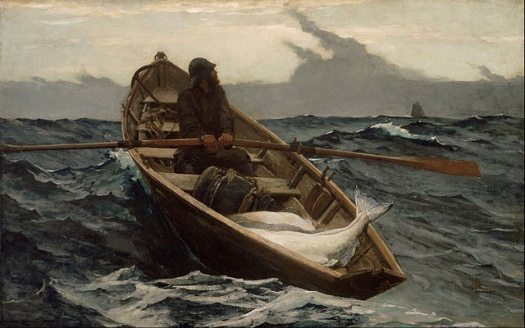
May 30, 2017, CapeCod.com
Most know Cape Cod for its sun-blanched beaches and its harbors filled with adventuresome trawlers sporting even more adventuresome names. If you are not a commercial fisherman, you might imagine the conversations on those boats and docks to be about the quality of the day’s catch, the going prices, and maybe the weather. But for the fishermen whose families are reliant on what the sea can produce, the conversations are more likely about quotas and federal regulations. The U.S. government increasingly tells the fishermen where they can fish, the number of days they can fish, the size of what they can catch, and the gear they can use to go about their work. Too often, the talk turns ominous.
When Cape Cod’s namesake fish population suddenly began to disappear, a grassroots group of commercial fishers formed the all-volunteer nonprofit Cape Cod Commercial Fishermen’s Alliance in 1991 (initially called the Cape Cod Commercial Hook Fishermen’s Association). Their primary concerns were the lack of protections for fish habitat and that the federal fisheries managers were not listening to the fishers and their communities. Today, the organization has nine paid staff members and raises more than $2 million each year in grants, donations, and dues. The Fishermen’s Alliance found a permanent home in 2010, buying and restoring an old sea captain’s house. The Fishermen’s Alliance has become one of the most influential fishing organizations in the country, committed to preserving the tradition of small-scale fishing that protects fishing habitats and fishing for future generations.
The Fishermen’s Alliance forward-facing marketing strategy plans to integrate engaging video into their communications. The Arts Foundation of Cape Cod is helping the Fishermen’s Alliance find and recruit “a digital storyteller” (still photography and video) who will serve as an artist-in-residence. This is a yearlong part-time position, paying a stipend of between $6,000 and $15,000, depending on the candidate’s experience and responsibilities, presumably to be worked out in the hiring process.
This is a unique opportunity for an enterprising photojournalist/videographer seeking to tell the story of a normally hard-to-reach profession. The Fishermen’s Alliance goal for the artist-in-residence is to give the general public a better understanding of organization’s value to Cape Cod.
Sign up for our free newsletters
Subscribe to NPQ's newsletters to have our top stories delivered directly to your inbox.
By signing up, you agree to our privacy policy and terms of use, and to receive messages from NPQ and our partners.
Presently, the Fishermen’s Alliance YouTube channel has 25 subscribers. The 20 or so videos have a modest number of views. Their tagline is, “Small Boats. Big Ideas.” That message is not apparent in their existing videos. However, their plan to engage an artist-in-residence is certainly a big idea. One would not expect this kind of initiative to be launched by a relatively small-membership organization of commercial fishermen. Any nonprofit would do well to watch what the Fishermen’s Alliance artist-in-residence begins to produce online and take careful notes.
What can they expect to get by offering a small stipend that would not cover a half-day’s work for a regular marketing firm, let alone production costs? A lot. If they are lucky, they may get a lot more than what the big companies can offer.
It used to be that the cost of equipment, editing software, and, from an end-user’s perspective, the data cost of consuming online video, was prohibitive. With the iPhone Film Festival now in its sixth year, the challenge today is finding the right artist. And that is why this partnership with The Arts Foundation of Cape Cod is such a brilliant move.
But art alone is not enough. Perhaps the biggest challenge for any nonprofit is strategic: How to create content that people want to consume, and how to create engaging videos that get shared. The Fishermen’s Alliance artist-in-residence will need a solid understanding of metrics and how they point the way for continual improvement. Yes, there is the still photography part of the job, but the cornerstone of any nonprofit’s content marketing efforts today needs to be video. From 360-degree videos (for the ambitious) to Facebook Live, all nonprofits need to respond to their audience’s shorter attention span by making content interactive and visual.
Disagree? Consider this infographic created by HighQ, one of the leaders in this space. Here are a few of the highlights, already dated: online video accounts for 74 percent of all online traffic this year; more video is uploaded to the web in one month than television produced in 30 years; 65 percent of viewers watch more than three-quarters of a video; 78 percent of people watch videos online every week, and 55 percent watch videos online every day. While it is very smart of the Fishermen’s Alliance to team up with The Arts Foundation of Cape Cod to produce content that people want to see, strategy will be just as importance as inspiration. It would seem that the Fishermen’s Alliance possesses an abundance of both.—James Schaffer













